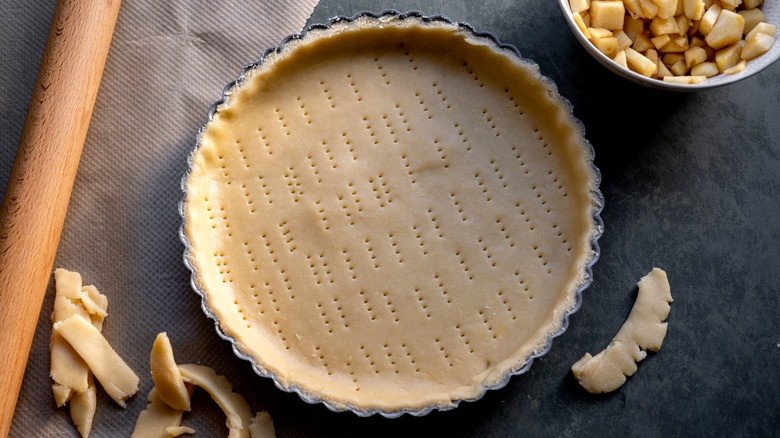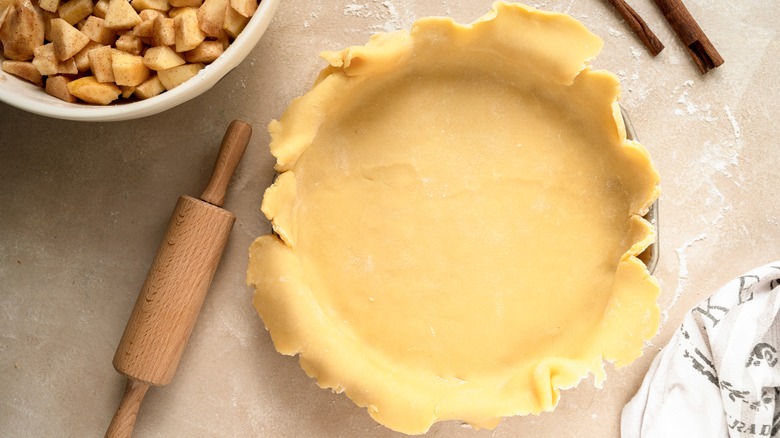The Practical Reason You Shouldn't Throw Away Pie Crust Trimmings
Making a pie crust from scratch may sound like a complicated endeavor, but Mashed insists the process is much easier than it seems. After gathering a few ingredients and with only 10 minutes of preparation, you can be on your way to baking a delicious crust ready for all your favorite pie and quiche recipes.
Once the dough is rolled to the appropriate width, it must be moved and pressed into a pie tin for baking. Ideally, one inch of crust extends beyond the container itself, and anything beyond that should be trimmed, recommends Tastes Better from Scratch. The remaining crust can be folded, crimped, or fluted for the desired effect. As tempting as it might be to discard the trimmings you have removed, hold off. These doughy discards can help save your crust from a few culinary mishaps, particularly if you are pre-baking your crust before adding any fillings.
Patch up pie crusts
America's Test Kitchen uses the dough cut from the crust to patch over any breakage before filling the pie with fruit, eggs, vegetables, or custard. Patching your crust this way can help ensure that whatever filling you place into the crust remains as planned and doesn't seep out when put into the oven. If the slides of the pie crust have slumped during that initial bake, you can also use dough trimmings to rebuild any noticeable shortcomings.
Don't get discouraged if your pie crust doesn't turn out exactly as you planned. Land O' Lakes assures at-home bakers that making pie crust is part art and science and can take a few tries to get right. The next time you attempt to make a crust from scratch, keep dough trimmings just in case any unexpected failures happen along the way. Should you bake a perfect crust without incident, you can always use leftover dough to make crackers to enjoy.

